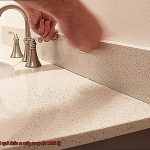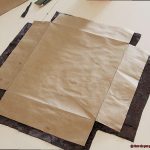Picture this: you’re camping in the great outdoors, exhausted from a long day of hiking. You crawl into your air mattress for a good night’s sleep, only to wake up to a deflated bed and a sinking feeling in your stomach. A hole in your air mattress is not exactly what you had in mind for your camping trip. But before you panic and start googling the nearest store that sells patches, take a deep breath. There are ways to fix that pesky hole without leaving your campsite or spending money on expensive patches.
Luckily, household items like duct tape, glue, and super glue can come to the rescue when you need them most. In this article, we’ll explore several methods of fixing an air mattress without a patch so that you can get back to enjoying your camping trip or overnight stay.
We’ll dive into the advantages and potential drawbacks of each method, helping you find the perfect solution for your unique needs. Whether you’re out in the wilderness or just want to avoid making an extra trip to the store, we’ve got you covered.
So don’t let a tiny hole ruin your night’s sleep – grab those household items and let’s get started on fixing that air mattress.
What Type of Glue Should You Use to Fix a Hole in an Air Mattress?
Contents
- 1 What Type of Glue Should You Use to Fix a Hole in an Air Mattress?
- 2 How to Prepare the Area Around the Hole for Repairing
- 3 How to Apply PVC Cement Properly to the Hole
- 4 Tips on How to Make Sure the Glue Adheres Properly
- 5 How Long Does It Take for PVC Cement to Fully Cure?
- 6 Pros and Cons of Using PVC Cement for Air Mattress Repair
- 7 Alternatives to Using PVC Cement for Air Mattress Repair
- 8 How to Maintain Your Air Mattress After Repairing a Hole
- 9 Conclusion
No worries. Fixing it is easy, but choosing the right type of glue is crucial. Not all glues are created equal, and using the wrong one could lead to your repair failing quickly.
One popular option is silicone adhesive. It’s strong, flexible, and waterproof, making it perfect for sealing holes in inflatable mattresses that are meant to hold air. Its heat-resistant feature allows it to withstand the pressure changes that occur as the mattress is inflated and deflated.
Another choice is cyanoacrylate glue, also known as super glue. It sets quickly and creates a strong bond between surfaces. However, it may become brittle over time and may not be able to withstand the pressure changes that occur during use.
Epoxy glue is another option that can be used to fix holes in air mattresses. This type of glue sets quickly and creates a strong, waterproof bond. However, it can be difficult to apply evenly and may require some skill to use effectively.
However, as an expert on the topic of repairing air mattresses, I highly recommend using PVC cement. This glue is specifically designed to bond PVC and vinyl materials together, which makes it the perfect choice for repairing air mattresses.
One of the advantages of using PVC cement is that it can be found at most hardware stores and comes in small tubes or bottles, making it easy to use. To begin, clean the area around the hole with rubbing alcohol or another cleaning solution to remove any dirt, debris, or oils. Then, apply a small amount of PVC cement directly onto the hole and spread it evenly around the area using a small brush or your finger. Be sure to apply enough glue to cover the entire hole and surrounding area.
After applying the glue, press down firmly on the area with a clean cloth or your fingers to ensure that it adheres properly. Allow the glue to dry completely before inflating the mattress again. It’s important to note that PVC cement can take up to 24 hours to fully cure, so be patient and avoid using the mattress until the glue has dried completely.
While there are other types of glue that can be used to repair air mattresses, PVC cement is my top choice due to its reliability and affordability. Additionally, it is specifically formulated for repairing PVC and vinyl materials, which is what most air mattresses are made of.
How to Prepare the Area Around the Hole for Repairing
You can still repair your air mattress without a patch by following these five steps to prepare the area around the hole properly.
Locate and mark the hole
The first step is to find the hole by inflating your air mattress and using your senses to locate the leak. Once you have located the hole, mark it with a pen or tape so that you can easily find it later.
Clean the area thoroughly
The next step is to clean the area around the hole with rubbing alcohol or soapy water and a cloth. Ensure that you remove any dirt, debris, or oils from the surface, as this can affect the adhesion of the glue. Allow the area to dry completely before proceeding with the repair.
Roughen up the surface
After cleaning and drying the area, roughen up the surface around the hole with sandpaper or a wire brush. This step will create a better bond between the surface and the glue. Be careful not to enlarge or damage the hole while roughening up the surface.
Apply glue
Once you have prepared the surface, apply a layer of glue to the area around the hole, ensuring that it covers slightly more area than the size of the hole. Allow the glue to dry completely according to manufacturer instructions before proceeding with inflating your air mattress.
Cover with tape
To protect the surrounding area from any glue that might spread during the repair process, cover it with tape. The tape will also help keep debris out of the hole and protect it from further damage.
How to Apply PVC Cement Properly to the Hole
If you’re dealing with a deflated air mattress due to a pesky hole, don’t fret. With PVC cement, you can easily repair the hole and get back to enjoying a comfortable night’s sleep. Here’s how to apply PVC cement properly to the hole in your air mattress:
Step 1: Prep the area
To start, make sure the area around the hole is clean and dry. Use a damp cloth and mild soap to remove any dirt or debris. Once it’s clean, let it dry completely before moving on to the next step.
Step 2: Apply PVC cement
Using a small brush or applicator, apply a thin layer of PVC cement around the hole, spreading it evenly and covering an area slightly larger than the size of the hole. Be sure not to over-apply, as this can cause seepage or an uneven surface.
Step 3: Wait for it to dry
Allow the PVC cement to dry completely before testing the repair. The drying time will depend on the type of PVC cement you’re using. Don’t rush this step, as it can affect the strength and durability of your repair.
Step 4: Test the repair
Once the cement has dried, test your repair by gently pressing on the repaired area with your fingers. If it feels firm and secure, then you’ve successfully fixed your air mattress without a patch.
Step 5: Give it time
Remember that PVC cement can take up to 24 hours to fully cure, so be patient and avoid using the mattress until the glue has dried completely.
Tips on How to Make Sure the Glue Adheres Properly

Glue may be the answer, but it’s important to ensure that the glue adheres properly for a long-lasting fix. Here are some tips to make sure your glue does the trick:
Clean and dry the area around the hole
Dirt, dust, and debris can interfere with the adhesive properties of the glue. Use a damp cloth to clean the area around the hole thoroughly and then use a dry cloth to ensure it’s completely dry.
Sand the surface of the mattress
Create a rough surface for the glue to stick to by lightly sanding the surface of the mattress around the hole. This will help create a stronger bond.
Choose the right type of glue
Not all glues are created equal. Choose a glue that is specifically designed for vinyl or plastic materials and can withstand high pressure. Look for a waterproof option for added durability.
Apply the glue in thin layers
To ensure proper adhesion, apply a thin layer of glue over the hole and let it dry completely before applying another layer. This will help each layer adhere properly and create a stronger bond.
Use pressure to help the glue adhere
Once you’ve applied several layers of glue, use your fingers or a roller to apply pressure to the area around the hole. This will help the glue adhere properly and create a strong seal.
How Long Does It Take for PVC Cement to Fully Cure?
If you’ve ever gone camping, you know that a leaky air mattress can put a damper on your outdoor adventure. Fortunately, PVC cement can be a quick and easy fix for this common problem. However, it’s important to know how long it takes for PVC cement to fully cure before you can comfortably sleep on your air mattress again.
The curing time of PVC cement can vary depending on several factors. Firstly, different types of cement may have different curing times, so it’s important to read the label and follow the manufacturer’s instructions carefully. In general, however, PVC cement can take anywhere from a few hours to a full day to fully cure.
Temperature and humidity also play a significant role in the curing process. Cooler temperatures and higher humidity levels can slow down the curing time, while warmer temperatures and lower humidity levels can speed it up. Therefore, it’s best to repair your air mattress in a warm and dry environment for optimal results.
The size and depth of the hole being repaired is another factor to consider when using PVC cement. Larger or deeper holes may require more time and effort to fix, as more cement needs to be applied to ensure a strong seal. In some cases, it may also be necessary to use a patch in conjunction with the cement.
It’s important to note that following the manufacturer’s instructions is crucial when using PVC cement. Different types of cement may require multiple coats or applications to fully seal the hole in your air mattress. Taking shortcuts or not allowing enough time for the cement to cure could result in a weak or ineffective seal.
Pros and Cons of Using PVC Cement for Air Mattress Repair
PVC cement may be the answer to your problems. As an expert in this topic, I have compiled a comprehensive list of pros and cons to help you decide if it is the right choice for your air mattress repair needs.
Let’s start with the pros. Firstly, PVC cement creates a strong and permanent bond between surfaces, making it an effective solution for repairing holes in air mattresses. Additionally, it dries quickly, usually within minutes, allowing you to use the air mattress soon after repairing it. The application of PVC cement is also relatively easy and does not require any special skills or tools. Lastly, it is an affordable option compared to other types of adhesives.
However, there are some cons to consider. The most significant downside is that PVC cement has a strong odor that can be overwhelming and unpleasant, making it difficult to use indoors. Furthermore, it contains toxic chemicals that can be harmful if ingested or inhaled; therefore, it should be used with caution and kept away from children and pets. It can also be messy to apply and may leave stains on fabrics or furniture if not used carefully. Lastly, PVC cement creates a rigid bond that does not allow for much flexibility, which can make the repaired area prone to cracking or breaking under pressure.
Alternatives to Using PVC Cement for Air Mattress Repair
Air mattresses are a convenient and comfortable sleeping solution, but they can be a real hassle when they develop leaks. Many people turn to PVC cement to repair these leaks, but this option may not be ideal for everyone. Luckily, there are plenty of alternatives that can be just as effective, if not better.
Let’s start with a classic – duct tape. That’s right. Duct tape isn’t just for taping up boxes or fixing leaky pipes. It can also be used to patch up a hole in an air mattress. Simply cut a piece of duct tape that’s large enough to cover the hole and apply it firmly to the mattress, smoothing out any wrinkles or bubbles. While duct tape may not be as durable as other options, it can provide a quick fix in a pinch.
Another alternative is silicone adhesive. This type of adhesive is flexible and waterproof, making it an ideal choice for air mattress repairs. Apply it directly onto the hole and allow it to dry completely before inflating the mattress again. Keep in mind that silicone adhesive may take longer to dry than PVC cement or other options.
If you’re looking for a more specialized solution, consider using a bicycle tire repair kit. These kits typically include patches and adhesive that are specifically designed for repairing rubber materials like air mattresses. Simply follow the instructions included in the kit to repair your air mattress.
In addition to these options, there are other materials you can use to repair an air mattress such as hot glue, contact cement or rubber cement.
When repairing your air mattress with any of these alternatives, make sure to follow the instructions carefully and allow ample time for the repair to dry before using the mattress again. And remember, prevention is key. Regularly inspect your air mattress for any signs of wear or tear and address any issues promptly to avoid larger problems down the line.
How to Maintain Your Air Mattress After Repairing a Hole
Repairing a hole in your air mattress without a patch is a great way to save money and time, but it’s essential to maintain it properly to avoid further damage. Here are some tips to help you keep your air mattress in perfect condition after repairing a hole without a patch.
Allow the Glue to Dry Completely
After repairing a hole, it’s crucial to let the glue or adhesive dry completely before using the air mattress again. Using the mattress before the glue dries can weaken the repair and cause further damage. Therefore, it’s recommended to wait at least 24 hours before inflating the mattress.
Keep Your Air Mattress Clean and Dry
Moisture can weaken the glue and adhesive, which can cause the repair to fail. To prevent this from happening, always wipe down your air mattress after each use and store it in a dry place. Regularly cleaning your air mattress with mild soap and water will help prevent any dirt or debris from getting into the hole and causing further damage.
Avoid Overinflating Your Air Mattress
Overinflating your air mattress can put pressure on the repaired area, causing it to fail. It’s recommended to inflate the mattress to the manufacturer’s recommended level. This will ensure that the repaired area doesn’t undergo additional stress.
Avoid Placing Sharp Objects Near or On Your Air Mattress
Even small punctures can cause significant damage to an air mattress that has been repaired without a patch. Therefore, avoid placing sharp objects near or on your air mattress. This includes sharp furniture edges, pets with sharp claws, and any other sharp objects.
Regularly Inspect for Any Signs of Wear and Tear
It’s essential to inspect your air mattress regularly for any signs of wear and tear after repairing a hole without a patch. If you notice any new holes or tears, repair them immediately to prevent further damage. This will help ensure that your air mattress lasts for years to come.
QXP-xTRcNwk” >
Conclusion
In conclusion, a punctured air mattress can be a real headache, especially when you’re camping or hosting guests. But don’t despair. There are several ways to fix it without resorting to a patch. In this article, we explored various DIY methods for repairing an air mattress using common household items like duct tape, glue, and super glue.
Each method had its advantages and potential drawbacks, but PVC cement emerged as the top choice for its reliability and affordability. This specialized adhesive is designed to bond PVC and vinyl materials together, making it ideal for repairing air mattresses. We also shared tips on how to prep the area around the hole properly and apply PVC cement correctly for optimal results.
But what if you don’t have access to PVC cement? No worries. We also discussed alternatives like silicone adhesive or bicycle tire repair kits that can get the job done in a pinch. Just remember that proper maintenance is key to keeping your newly repaired air mattress in good shape. Follow our tips to prevent future damage and ensure many nights of peaceful slumber.
In short, fixing a hole in an air mattress without a patch is totally doable with the right tools and techniques at your disposal.






